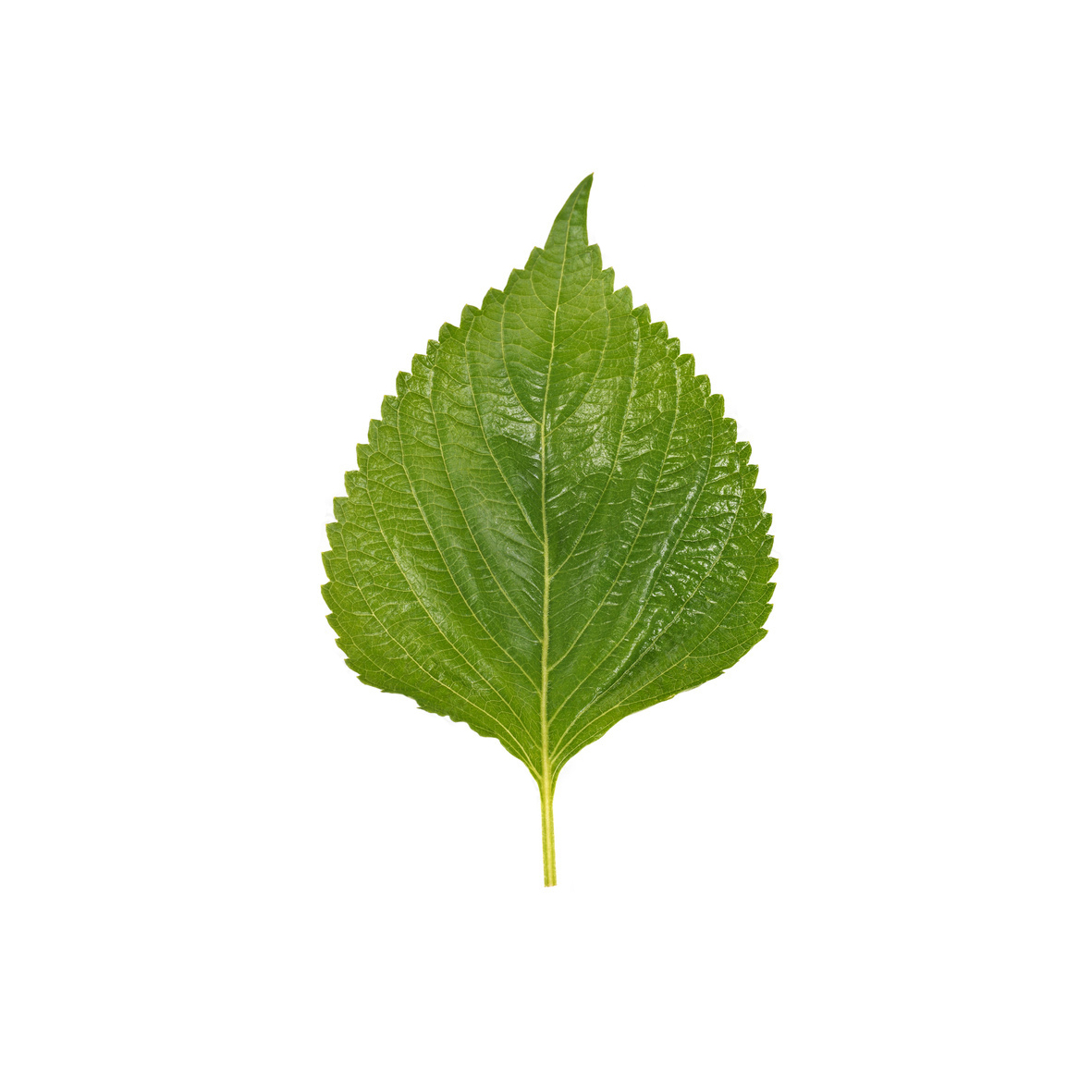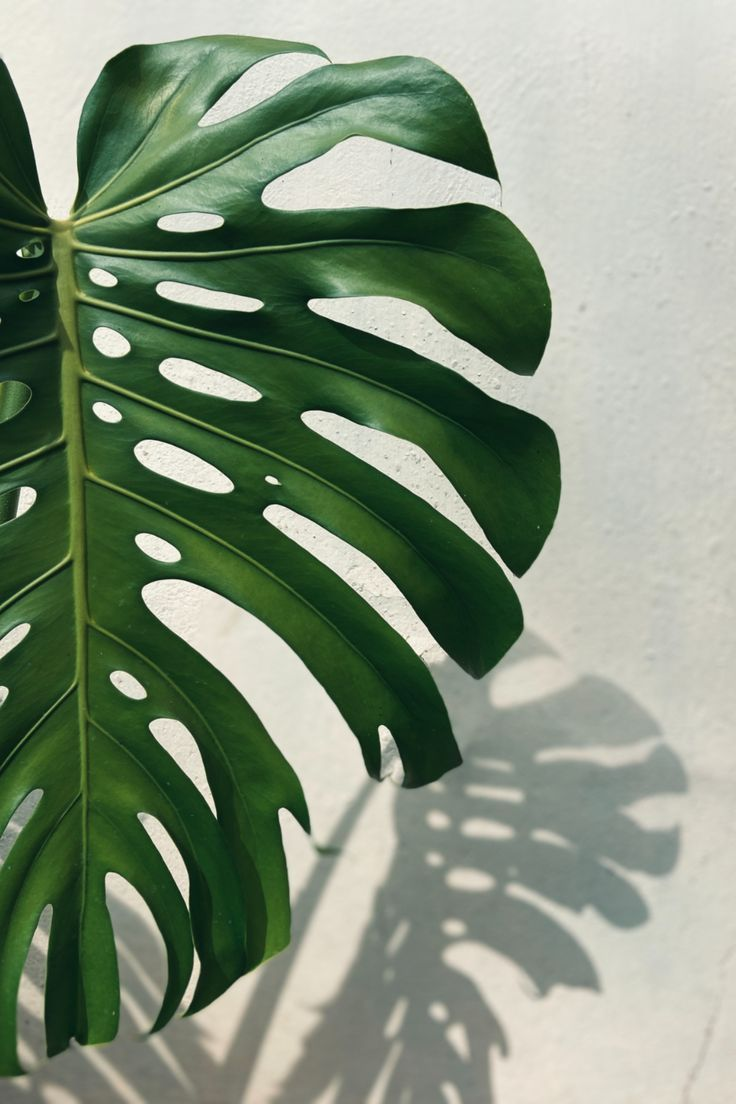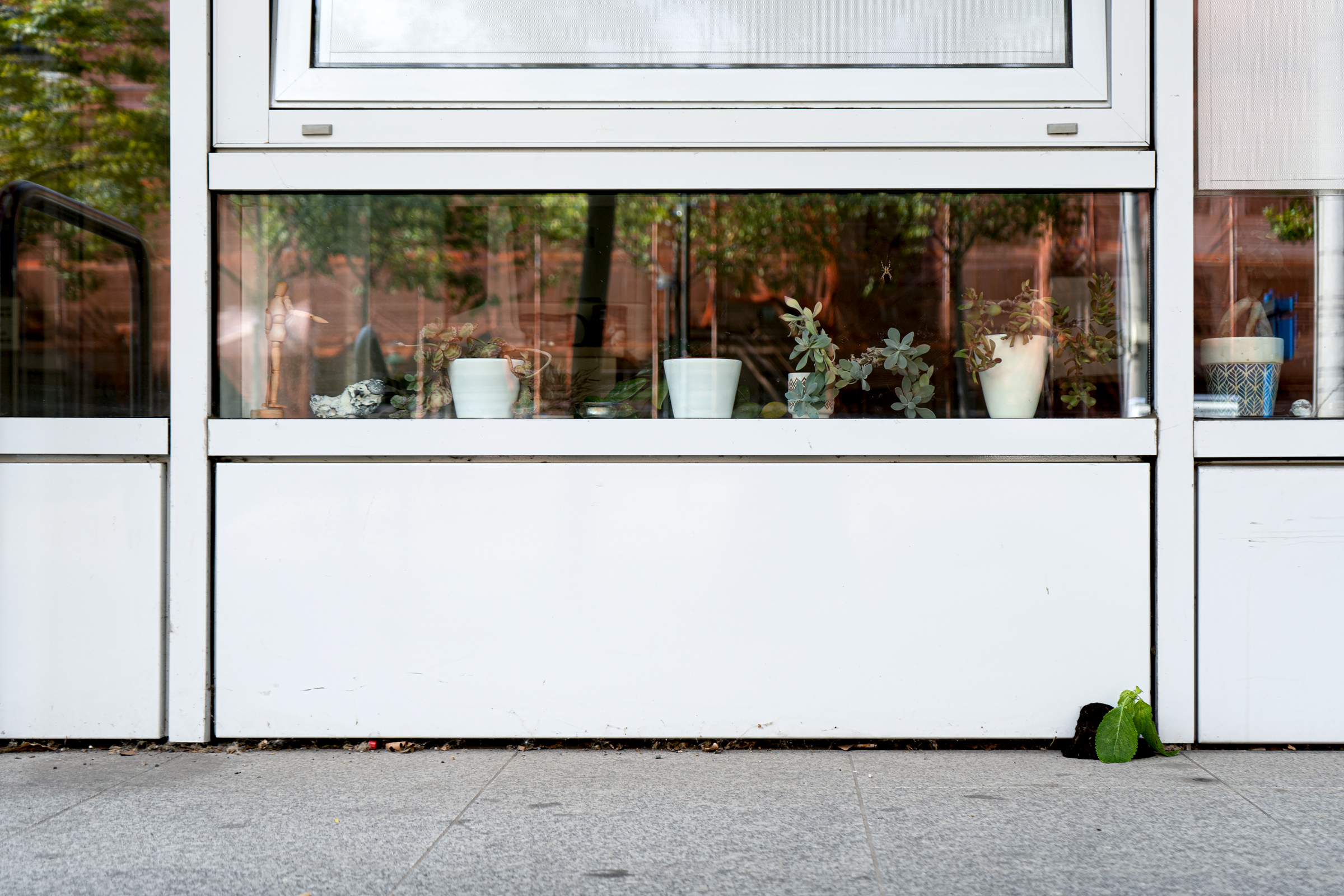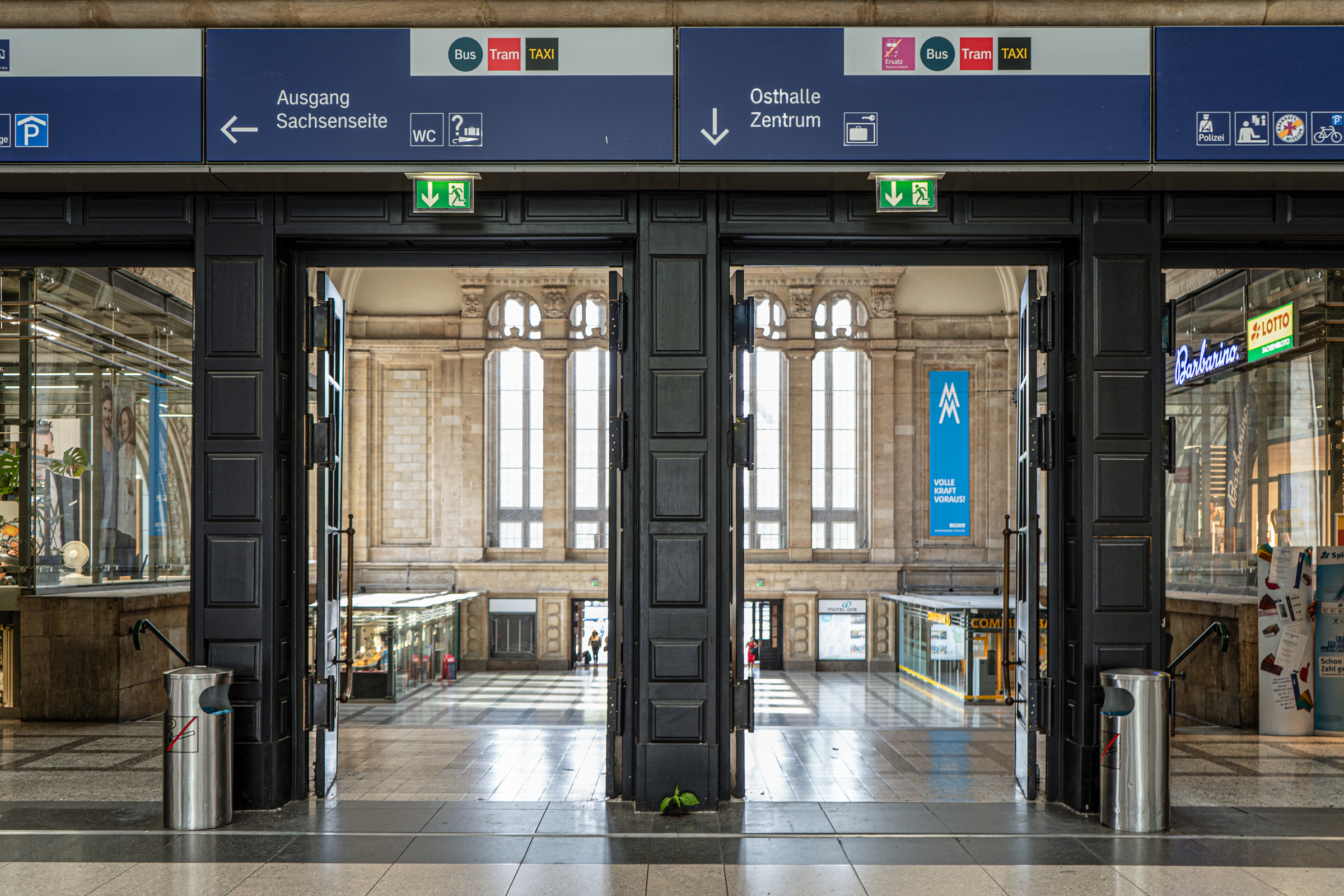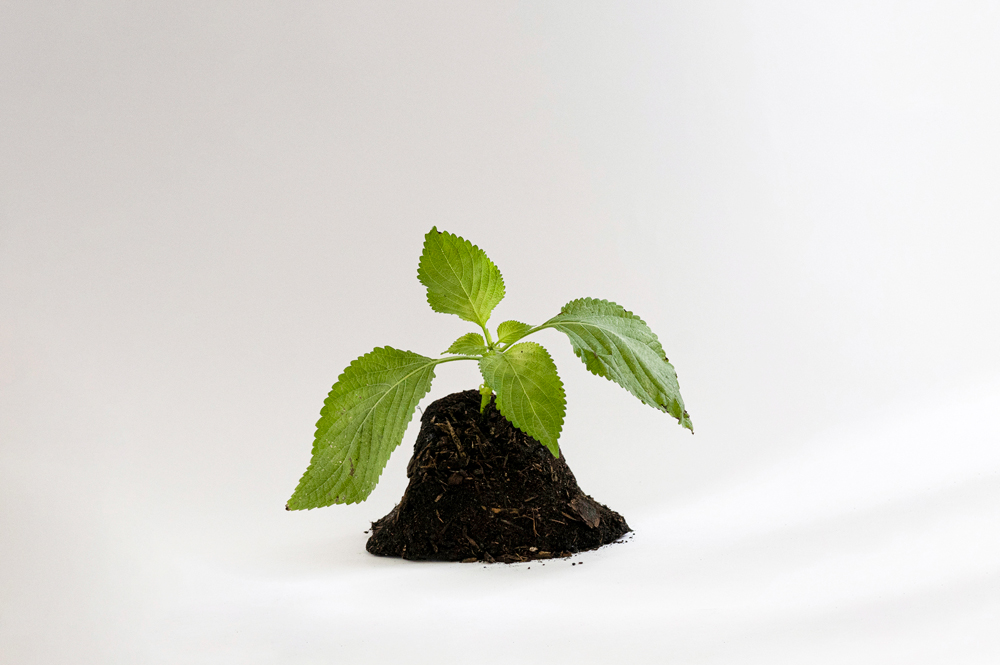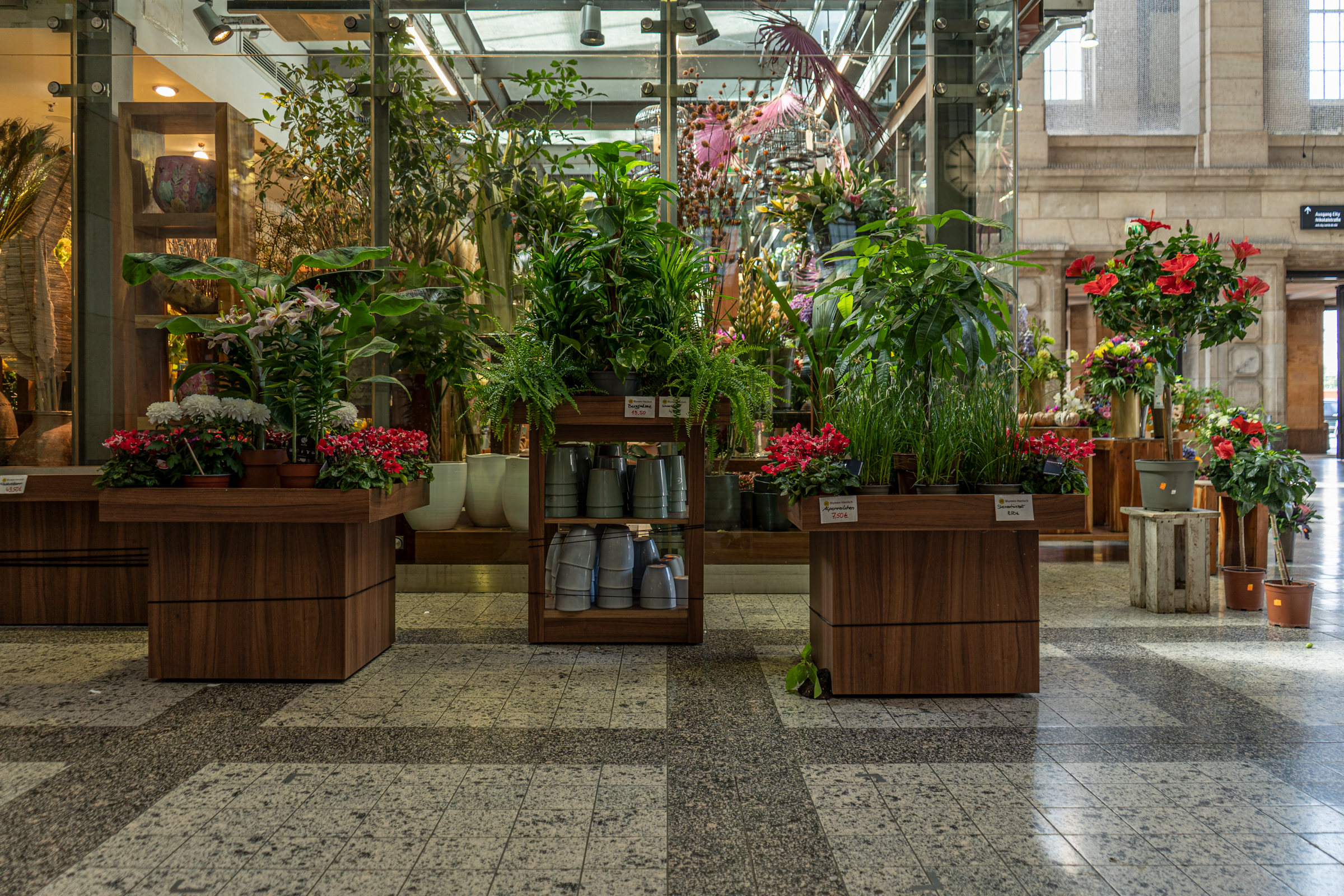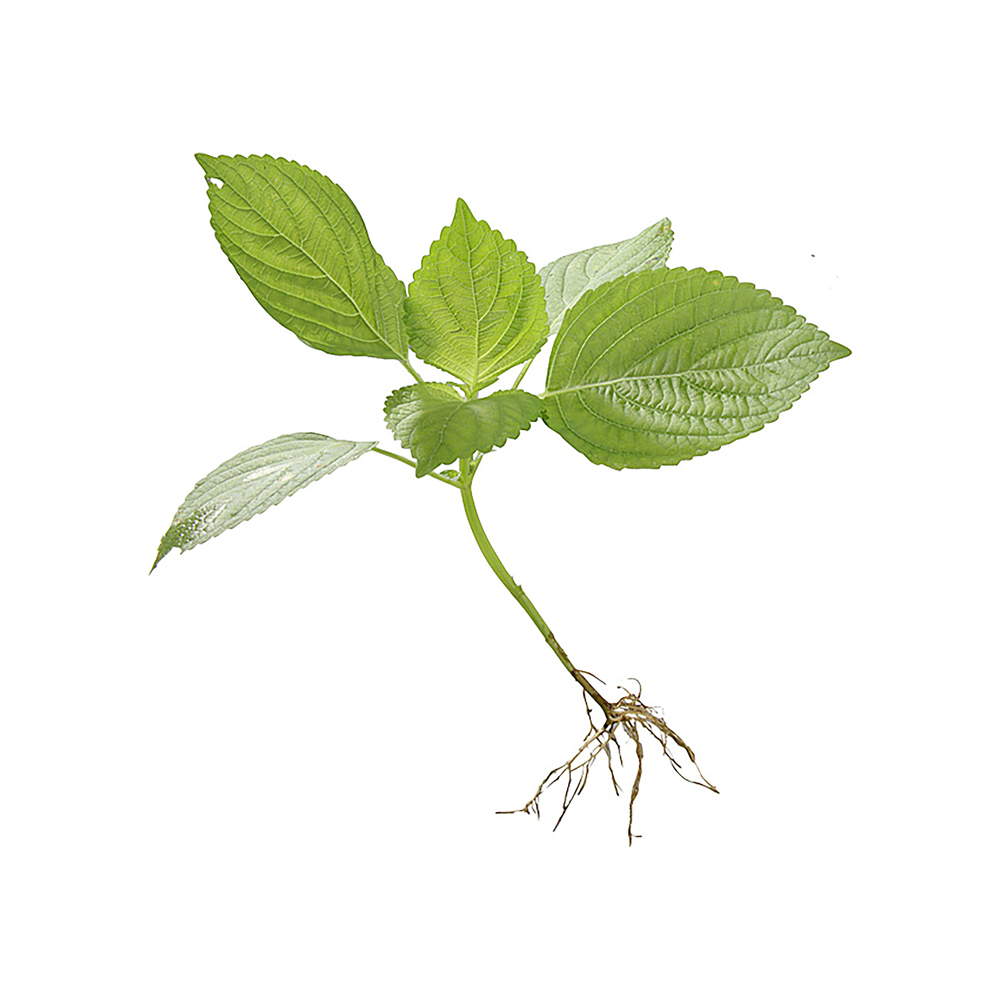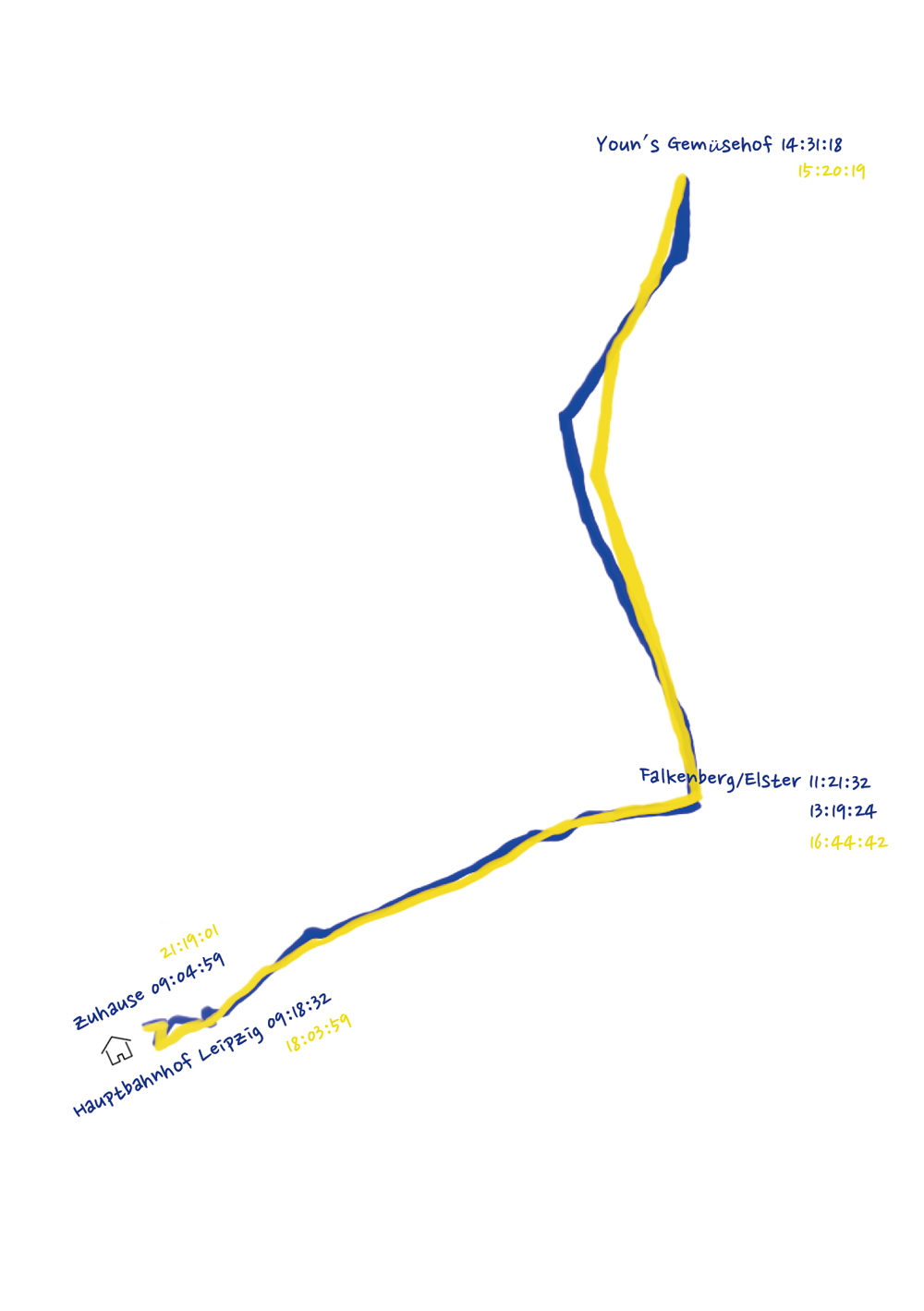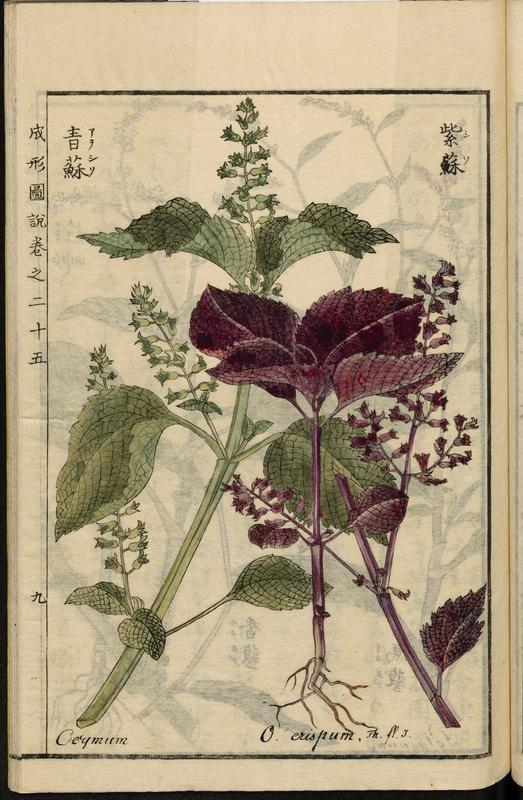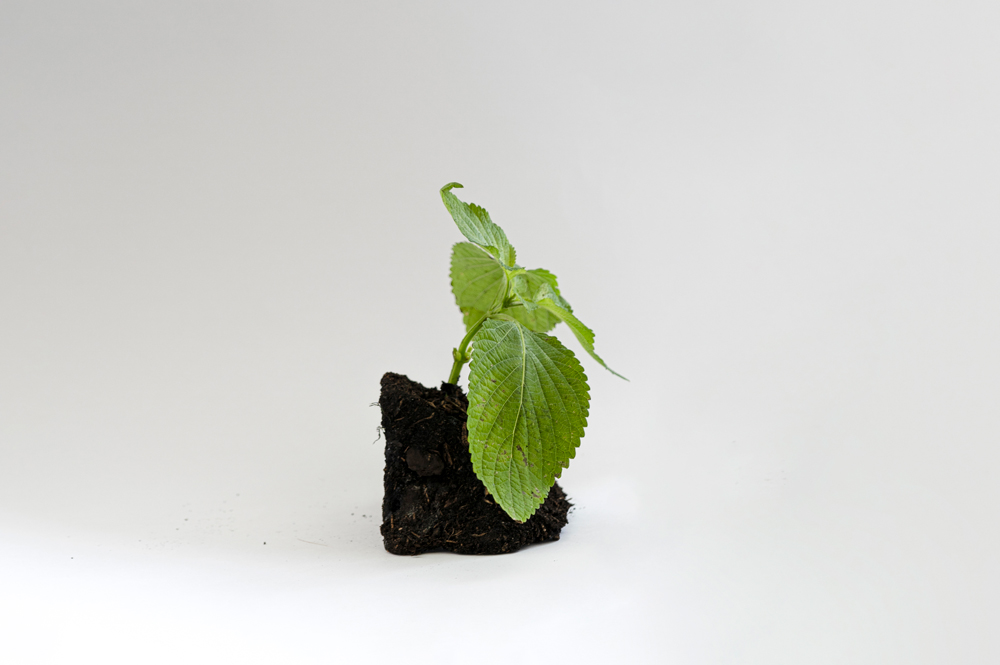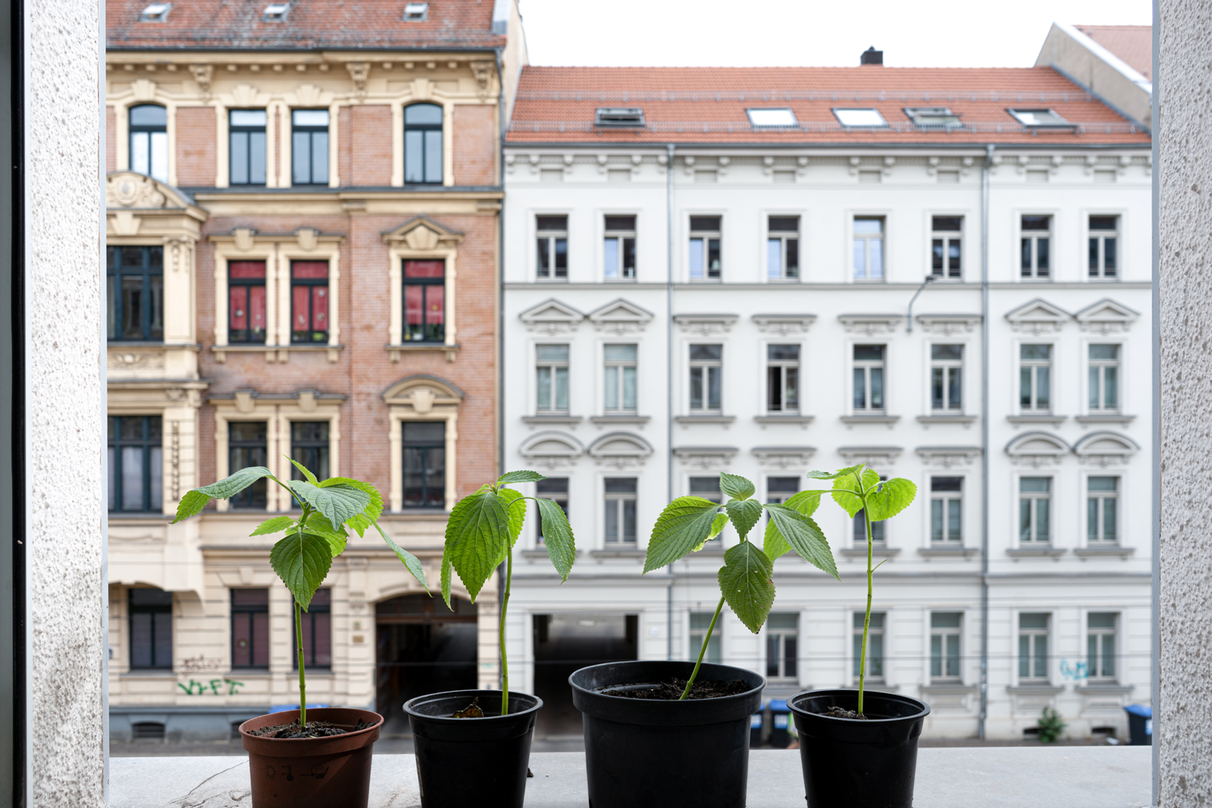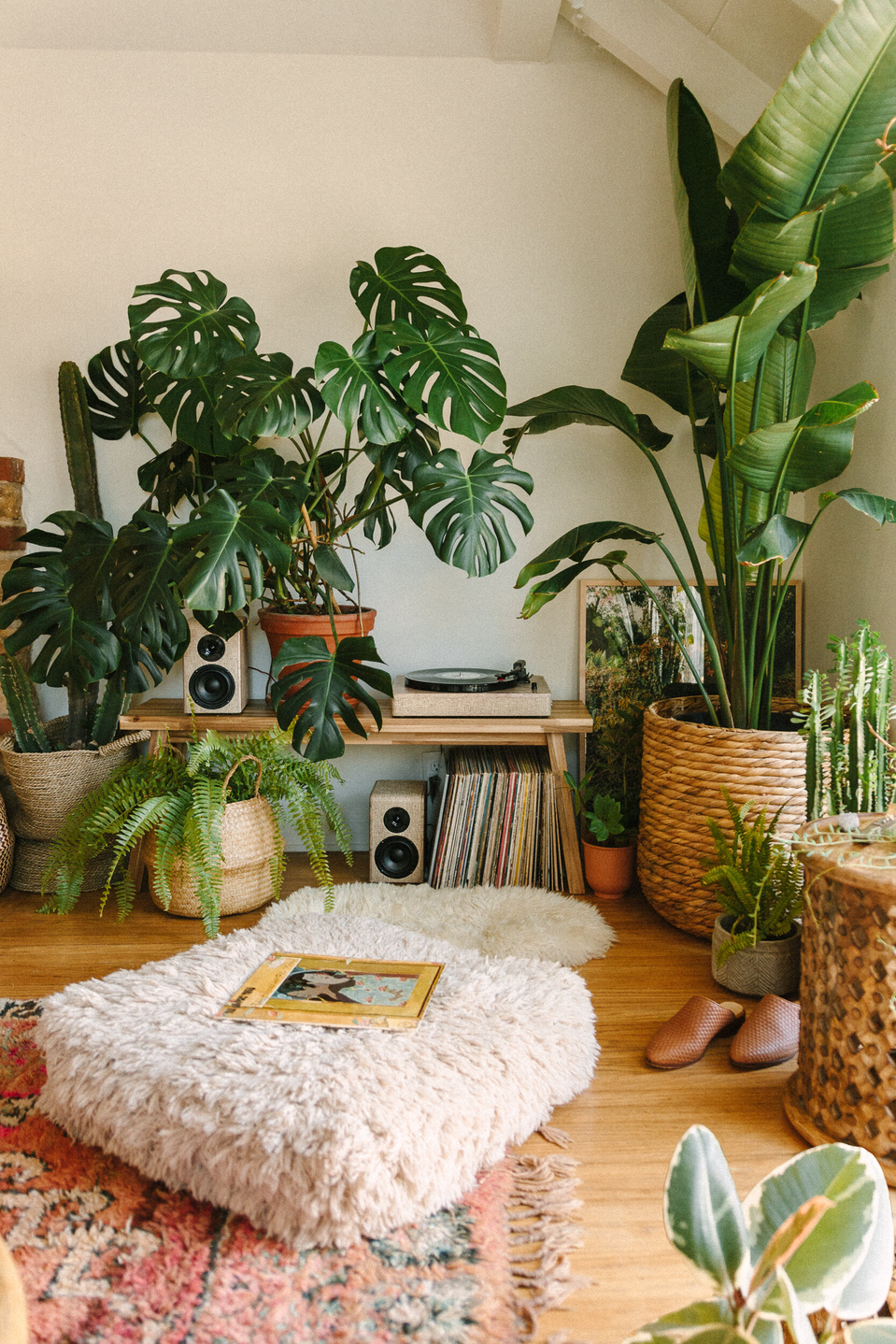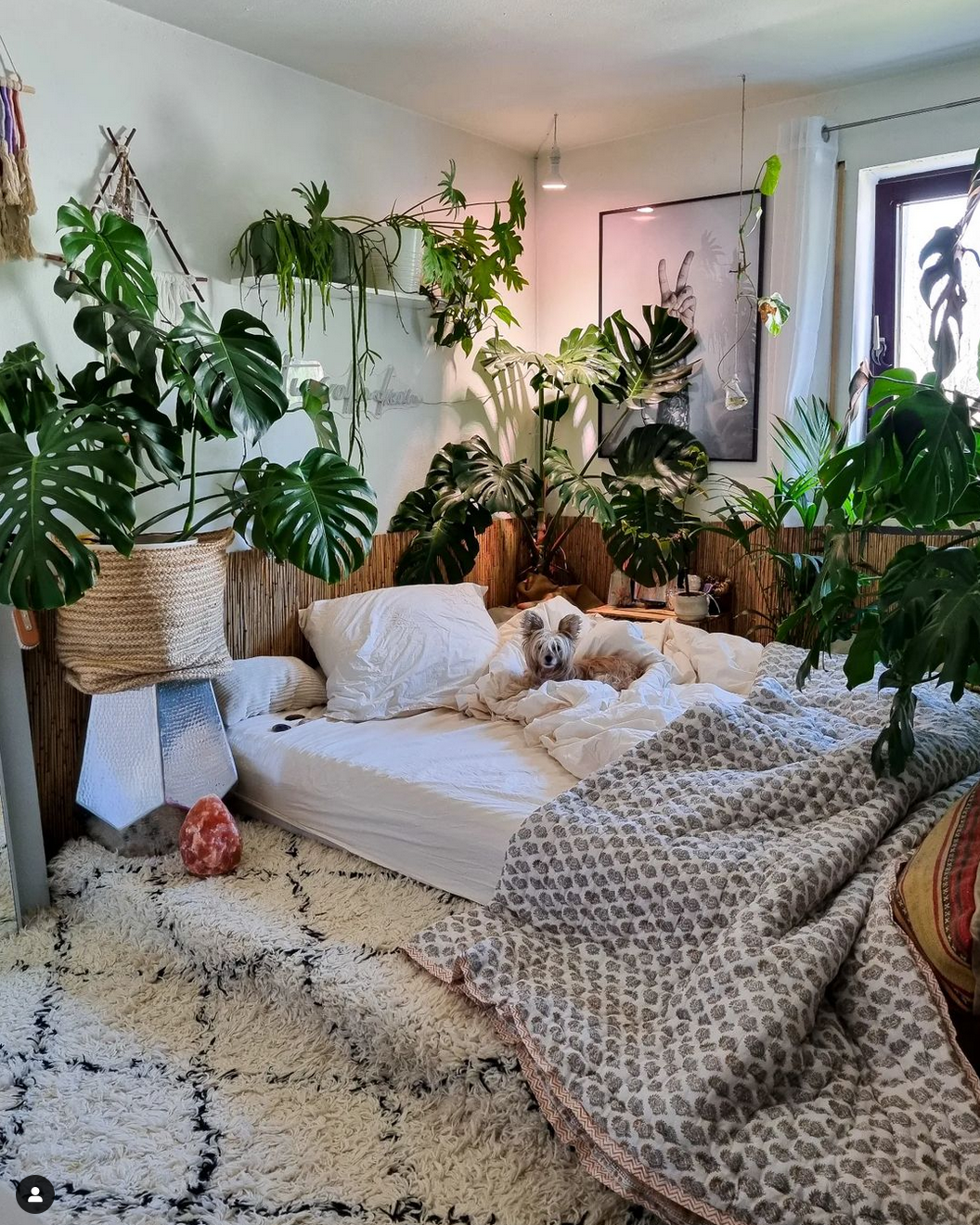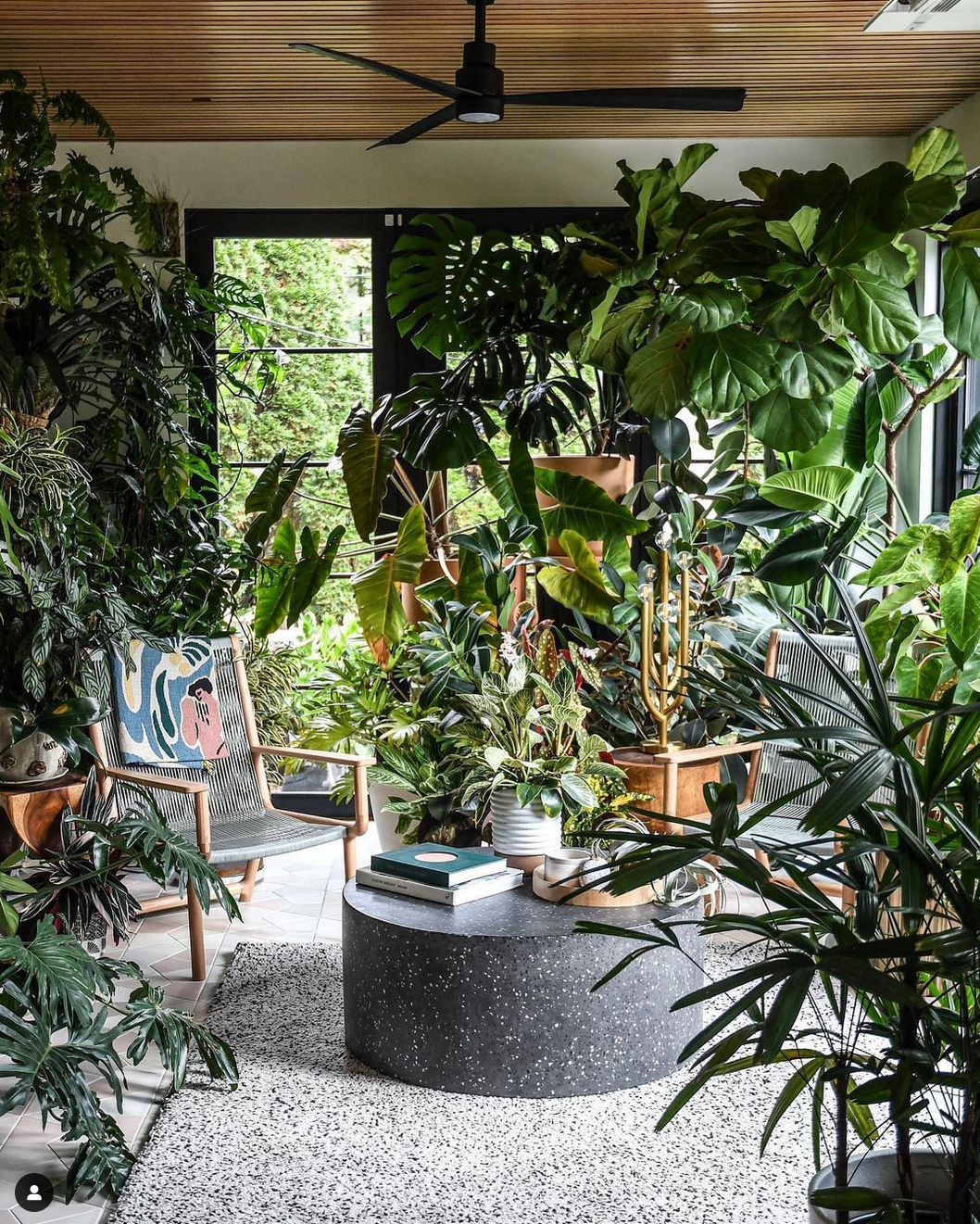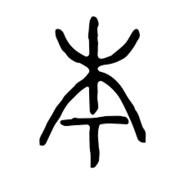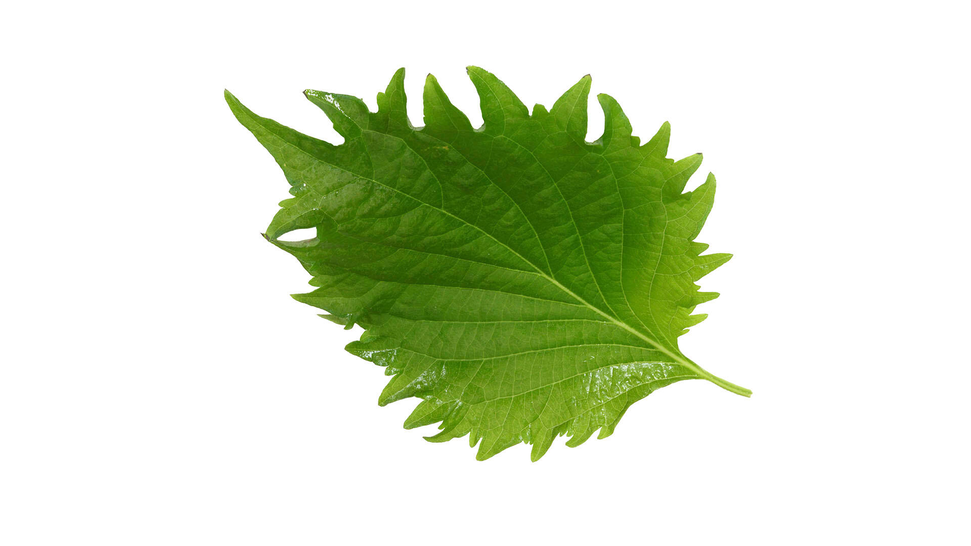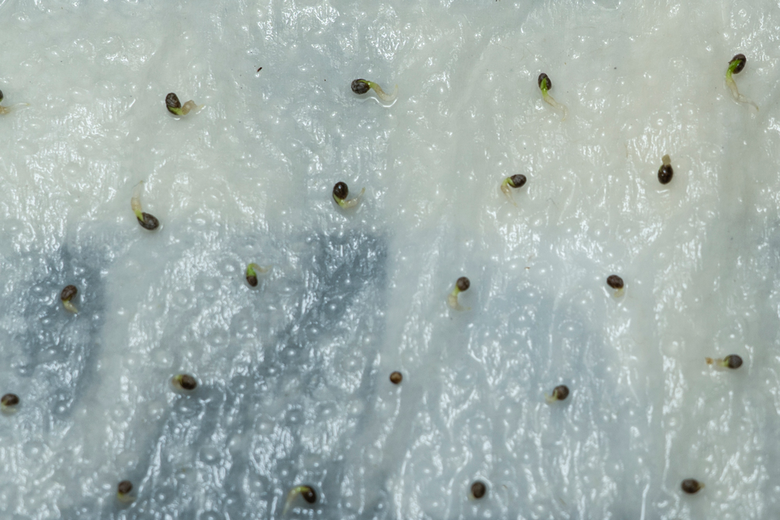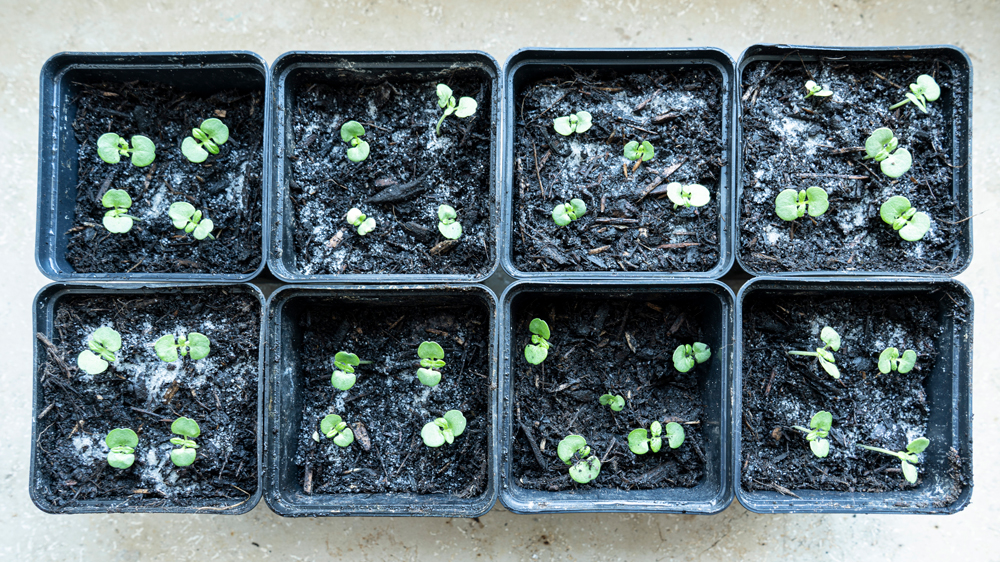As an artistic movement I want to experience this plant translocation phenomenon, so this summer I got seeds and plants from Korean people in Germany, which I never had personal contact with. At home, I cultivate this Perilla plant and planted it in the places that I want to make my niche in Germany.
08. May 2023 I placed an oder for Korean Perilla seeds.
15. May 2023 I received Perilla seeds and began the germination process.
29. June 2023 I discovered that the Perilla plant I were growing a Japanese Perilla(Shiso).
6. July 2023 I atempted to purchase seeds from another online store, but unfortunately, my germination attempts were unsuccessful.
13. July 2023 I posted a request for Perilla seeds on a Korean community network in German.
14. July 2023 I received a response from someone who offered to send me the seeds.
21. July 2023 you received the seeds from this person and began the germination process.
22. July 2023 I visited pastor Youn farm and received four pots.
고향 (故鄕 Go-Hyang, literally "old place") is 1. the place where one was born and grew up; 2. the place where one's ancestors lived for several generations; 3. the place for which one feels deep inner longing and familiarity; and 4. the origin where a thing or phenomenon originates or comes from(National Institute of Korean Language 2023)
Even if you don't know the name of this plant, you can easily recognize it by its distinctive leaves. With its unique leaf structure, Monstera is known as the "Swiss Cheese Plant."
Monstera Deliciosa is not a common plant because it is difficult to find in the wild. When the Danish botanist Liebman discovered the species in Mexico in 1840, he described it as a new type of Monstera.(Matlock 2023) The leaves of monstera plants are typically glossy and dark green, but popular variegated cultivars feature green leaves speckled with patches of white.This plant is the result of two different types of chromosomal makeup mingling, resulting in a mutation. One of its key advantages is its ease of care, full of vitality, and the ability to effortlessly create a tropical rainforest-like ambiance with its exotic, large leaves. It gained significant attention around 2020, partly due to the Indoor Plant Trends in COVID pandemic. Monstera's explosive popularity among gardeners not only led to its appearance in over 25% of interior design content on Instagram but also resulted in an astonishing 713,000+ products featuring Monstera leaves when searched on the E-Commerce website Etsy(Lieber 2023).
Despite its soaring demand, this relatively rare plant became considerably expensive. Specifically Monstera Deliciosa Albo Variegata, ranges in price from $700 to $5,000. It effectively transitioned into a symbol of showcasing wealth with elegance, unlike the overt displays of material wealth seen in some Instagram photos. However, in these ostentatious photos, one might wonder if the Monstera's price is the only reason for social comparison and a sense of deprivation. It is essential to pay attention to the space or backdrop in which this plant is placed. The backdrop consistently portrays an ideal, beautiful home worthy of interior magazine features: spacious areas, high ceilings, ample sunlight streaming through large windows or onto the balcony, and tastefully arranged furniture and decor. Regardless of its origins in different habitats, we can infer that it is a home that has the necessary environmental conditions for plant cultivation, as evidenced by the healthy condition of the plants. The following are the minimum environmental conditions at home required to maintain plants in good health:
a. Lighting: A home with ample natural light is essential. It should have access to at least 4-6 hours of direct sunlight per day, provided through features like balconies or gardens. For indoor plants, a home with large windows or glass doors that allow natural light to enter is preferable. If the home lacks sufficient natural light, investing in artificial grow lights is an option for indoor gardening. Grow lights can be set up to provide the required spectrum and intensity of light for plant growth.
b. Outdoor or Indoor Space: A home with a garden, balcony, or patio provides ample space for setting up potted plants. The size of the outdoor space will determine the number of pots and plants that can be accommodated. Even if there is no outdoor space available, many plants can be grown indoors on windowsills, shelves, or tables. Adequate indoor space is necessary for placing pots and ensuring plants have enough room to grow without being overcrowded.
c. Easy Access to Water: Having access to a water source, such as an outdoor hose or indoor water supply, is crucial for regular watering of potted plants. Adequate drainage is also essential to prevent waterlogging and root rot.
d. Climate and Environment: The climate of the region where the home is located plays a significant role in determining the types of plants that can thrive. For example, homes in cold climates may require more indoor gardening options during winter months. Indoor plants may have specific temperature and humidity requirements. A home with a consistent indoor temperature and humidity levels within the suitable range for the chosen plants is preferable.
e. Maintenance and Care: Each type of plant has specific care requirements, so regular attention and time investment are essential.For example, as plants grow, their pot size may become inadequate, so repotting into a larger container every two years is recommended. To prevent root rot due to overwatering, address pest issues, prevent diseases, and providing adequate fertilizer, regular care measures such as pruning is necessary.
What can be discerned from these images is regardless of external seasonal changes, a stable life where such an environment is consistently maintained, and frequent moves of residence are unnecessary. Moreover, with the continuous update of new images and the accessibility provided by social media from anywhere and at any time, we easily find evidence that someone else seems to be living a better life than our own(Samuel 2019). It's the immediate comparison of the most personal space where our most basic human needs are met.
Of course, not everyone can afford to live in such an environment. Before I immigrated to Germany in 2013, Seoul, where I lived, was one of the cities suffering from severe housing shortages. In Seoul and its surrounding areas, 4 out of 10 homeowners under the age of 35 were considered "house poor" according to Statistics Korea last year, meaning that the cost of housing left them without enough money to cover their basic living expenses(Kim 2017). Due to the abnormally skyrocketing real estate prices in Korea, the number of households living in "Alternative-accommodations" (such as goshiwons, semi-basements, rooftop houses, etc.) increased from 57,000 to 463,000 during 2005 to 2020(Jang 2022). In South Korea, 1.3 million young people, known as modern time refugees living in the Alternative-accommodations(Kim 2017). Among these, semi-basement apartments, known as "Banjiha," gained attention following the success of director Bong Joon-ho's film "Parasite" in 2019. These affordable alternative housing options are also inhabited by vulnerable populations such as migrant workers, low-income individuals, and elderly people without family support.
Within these spaces, the quality of life varies depending on the presence of windows, their size, and the views they offer. Windows have historically symbolized wealth in medieval Europe to the extent that taxes were levied based on the number of windows in a property. The size of windows affects factors like lighting, air quality, and temperature differences between indoor and outdoor environments, making them the most influential architectural element that shapes the quality of life. However, in impoverished living conditions like goshiwons, Jjokbang, and semi-basement apartments, sunlight is considered a luxury1(Lee 2022). In these spaces, living areas typically range from 4.2 to 23.14 square meters, windows are either non-existent or extremely small, and window guards are often installed due to their proximity to ground level. Additionally, ventilation is inadequate in these spaces. Such living conditions are not conducive to the well-being of either plants or people.
The scarcity and inadequacy of these housing spaces are not the only problem in Korea. People use spaces for various functions, but within these spaces, there can also be exclusions of different groups, the exclusion of certain activities, and human rights violations. This occurs because the process of spatial formation transforms into a production process due to the dominance of the state, capital, and institutional knowledge about people and their daily lives. We require private, collective, and public spaces, and to inhabit these spaces, we must utilize them and create something within them. Spatial rights pertain to the creation and use of spaces(Lefebvre 2016). Lefebvre laid the foundation for this idea and field of research with his 1968 book, "The Right to the City." In his book, Lefebvre defines the right to the city as two main rights: the right to participate centrally in the production of urban space and the right to appropriate urban space(Sadri 2012). To fully utilize spaces, people need the right to appropriation. To realize this right, spaces must be protected from any form of power. The right to appropriation provides the right to dwell for everybody without being excluded. We need to realize how limited our rights regarding space are in the modern city and contemplate ways to support socially vulnerable groups and improve accessibility and quality in terms of housing environments and spaces.
Leiden University Library - Seikei Zusetsu vol. 25, page 009 - 青蘇 - Perilla frutescens (L.) Britton, 1804.
1. The Root
In language, there are some metaphorical words that naturally draw parallels between humans and nature. For example, comparing an individual's foundation or origin to "roots." Roots are the most vital part of a plant, representing its source and the effort and time it takes for a plant to adapt and grow deep roots in one place. Since the late 12th century, it has been used to metaphorically describe the source or origin of characteristics or states, and from the mid-15th century, "take root" has been used to mean "establish oneself on the land," symbolizing an individual's stability and settlement.(Online Etymology Dictionary 2023) However using roots as a metaphor for an individual's settlement can, at times, carry a negative connotation, implying someone who is "rootless" or "uprooted," signifying a person with an uncertain origin or a life of wandering without a stable place.
Today, we commonly grow plants in pots in our home without even knowing where they originated. These plants, uprooted and having traveled long distances, are akin to individuals who, for their own reasons, leave their homeland to settle in a new country, adapting to a novel environment. How do these plants and people navigate the process of adaptation in their new surroundings?
Native species, which once thrived in their habitats, and non-native species, also known as invasive, alien, or exotic species(G. Tyler 2012), both are likely to undergo significant changes in their own survival strategies and ecological niches. They must adapt to a realized niche, constrained by competition for resources and habitats, rather than their ideal fundamental niche.(Ricklefs 2008) Non-native immigrants, having left their place of birth for a new niche, face the challenge of adapting to their chosen new environment. What is their true status in these unfamiliar surroundings?
Since moving to Germany in 2013, the aspect of my identity that others are most curious about, above all else, has been my place of origin. The question "Where are you from?" would repeat frequently in my daily life. To others, my appearance and behavior only seemed to make sense once they knew my place of origin. The German word "Heimat," which translates to “hometown” in English and “고향 故鄕 Go-Hyang" in Korean, has been defined in dictionary as a geographical location, such as a birthplace, hometown, or place of residence, according to the Grimm brothers' dictionary in 1877(Grimm 1877). However, it has been used to convey a meaning that goes beyond the simple dictionary definition.
In our not-so-distant past, there were wars, and there were generations who lost their homeland due to them. From the 1820s to the 2000s, they explored various aspects of Heimat in literature, film, music, and more(Schumann 2016). Heimat became a space of yearning, a lost paradise, an origin, and a space one must return to(Flusser 2003). Heimat doesn't just refer to a physical place; it is a space of representation that symbolizes the memories and experiences within an individual, current relationships, and emotions. However, in the current changed societal context, Heimat, which still carries the utopian meaning created in the 1800s, is practically a "myth" for our generation. In this word, there is a gap between the signified and the signifier that makes one wander after an illusion of Fata Morgana. In this era, birthplace (Geburtsort), place of residence (Wohnort), and homeland (Heimat) are no longer used synonymously. Stripped of its romantic utopian meaning, Heimat is primarily a political concept in reality. It serves as a means to differentiate nationality and place of origin, and nothing more.
Living in a rapidly changing modern society, we are seeking new values and meanings. Some people continue to hold onto their attachment to their Heimat, seeking identity and stability without leaving the past behind, while others leave their Heimat to rediscover themselves in new regions. Heimat is no longer destiny but rather a coincidence, and identity is no longer fixated on territory(Ariel Hauptmeier in Dogramaci 2016). Vilem Flusser argued that his Heimat was not a specific place but an abstract network of human relationships(Flusser 2003).
For those of us living in the era of transnationalism, the meaning of Heimat will continue to evolve alongside cultural, political, and social changes, and it is something we can define and determine for ourselves. Understanding our identity should involve more than just where we come from; it should focus on how we live and how we choose to live. This research is a process of defining the meaning of one's origins, defending one's ecological niche in the chosen place, and introspecting how to live in the present.
2. The Wardians Case
Across the world, for thousands of years, plants have been used for medicinal purposes, to cook with, for their scent, or just to admire(Horwood 2020). Starting from the 3rd century BC, the Egyptians used clay vessels for the transportation of plants(Horwood 2020), and these relocated plants found their place in human homes, whether in the courtyard, on the balcony, or even on window sills, becoming an essential architectural element in the form of "gardens."
Today, we can easily bring plants into our homes at a low cost. It's common for us to have decorative plants in our rooms without even knowing where they came from or what their names are. Especially during the COVID pandemic, there has been a surge of new gardeners, with 18.3 million new gardeners emerging, most of whom are millennials(Mayers 2023). These new gardeners immediately started sharing their plants on social media platforms(Horwood 2020), particularly Instagram, which focuses on photo and video sharing. This phenomenon has transformed indoor plants into a trend of "showing off" on social media, following the nature of these platforms(Cole 2021).
Using plants as a means to showcase wealth is not a new concept. Historically, exotic or rare plants from distant lands were considered luxury items and symbols of high status in Europe. "Collectors" sought increasingly rare plants, and plant hunters ventured across seas and unknown lands, going to great lengths and risks to bring these plants to Europe(Hielscher 2004).
The 17th-century Tulip mania in the Netherlands, the 18th-century Orchid Fever, followed by the craze for grasses(Lauren 2023), once even palm trees and cacti, and now Monstera plants, all serve as examples of such plant-related obsessions.
3. Plant Migration_Korean Perilla
There are various motives for individuals to leave their native country, but most people who arrive at a new location face difficulties such as the lack of knowledge about the sociocultural, natural environment, and food. Among these, food is not only directly related to personal health but also stimulates the senses through its taste and evokes familiar memories of one's homeland. Today, we live in a time when almost everything can be transported across borders but still though the exchange of easily perishable foods, are often restricted. As a result, immigrants bring ingredients that remind them of the flavors of their homeland when they enter a new country, including spices, herbs, and plants. For example, immigrants from Mexico and Central America frequently maintain plots of crops from their homelands in home gardens and community gardens. In fact, the export and import of plant and plant products between countries are so strict that individuals or institutions must obtain export and import permits and carry plant health certificates to move these items(Phytosanitary certificate). When individuals grow small quantities for personal use at home, quarantine inspections are not required, but an "Application for Exemption from Plant Quarantine Certificate Attachment(In Korea)" must be submitted. Due to these processes or simply by ignorance, many items are often smuggled without proper documentation, as is the case with Korean Perilla.
Korean Perilla, also known as kkaennip(literary, Sesame leave) belong to the mint family Lamiaceae and are a type of herb used as a spice, similar to mint and other herbs. However, their unique aroma is quite strong, so Korea is almost the only country where they are consumed raw. In Japan, a variant called shiso is used in cuisine, but sesame leaves have historically been avoided as a vegetable due to their overpowering aroma. In Korean cuisine, kkaennip or perilla leaves are widely used as an herb and a vegetable. Kkaennip can be used fresh as a salad or pickled in soy sauce or chili sauce to make jangajji or kimchi. Deulkkae, the perilla seeds, are either toasted and ground into powder called deulkkae-garu or toasted and pressed to make perilla oil. Toasted deulkkae powder is used as a spice and a condiment for soup, and seasoned vegetable dishes.
As a result, many people living abroad began to miss sesame leaves and started to import them in the form of pickles (jangajji), which have a longer shelf life and are easier to store and transport. Some more adventurous individuals gradually started to bring the seeds and grow them by windowsills or on balconies. In Germany, for example, I often witnessed posts from the Korean community every early summer, with people looking for sesame leaf seeds or sharing their experiences of growing them. During the late summer harvest season, some people even share their own harvested sesame leaves or distribute seeds for next year's cultivation. As immigrants move plants with them to new areas, they can contribute to the establishment of new plant species and form unique cultural practices related to these plants. This process is known as "cultural plant transfer" or "plant translocation," and it also helps preserve the genetic diversity of plants.
Rooftop house2
Banjiha: In Bong Joon-ho's Parasite of 2019, the drab semi-basement of the Kim family.3
Goshiwon4
쪽방 Jjokbang5
Contents
1. The Root
근본 (根本 Geun-Bon, literally "The root of a plant") is 1. The root of a plant. 2. The essence or basis of a thing. root, base. 3. The environment in which you grew up or your ancestry(National Institute of the Korean Language 2023)
